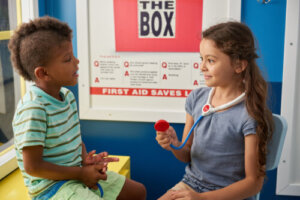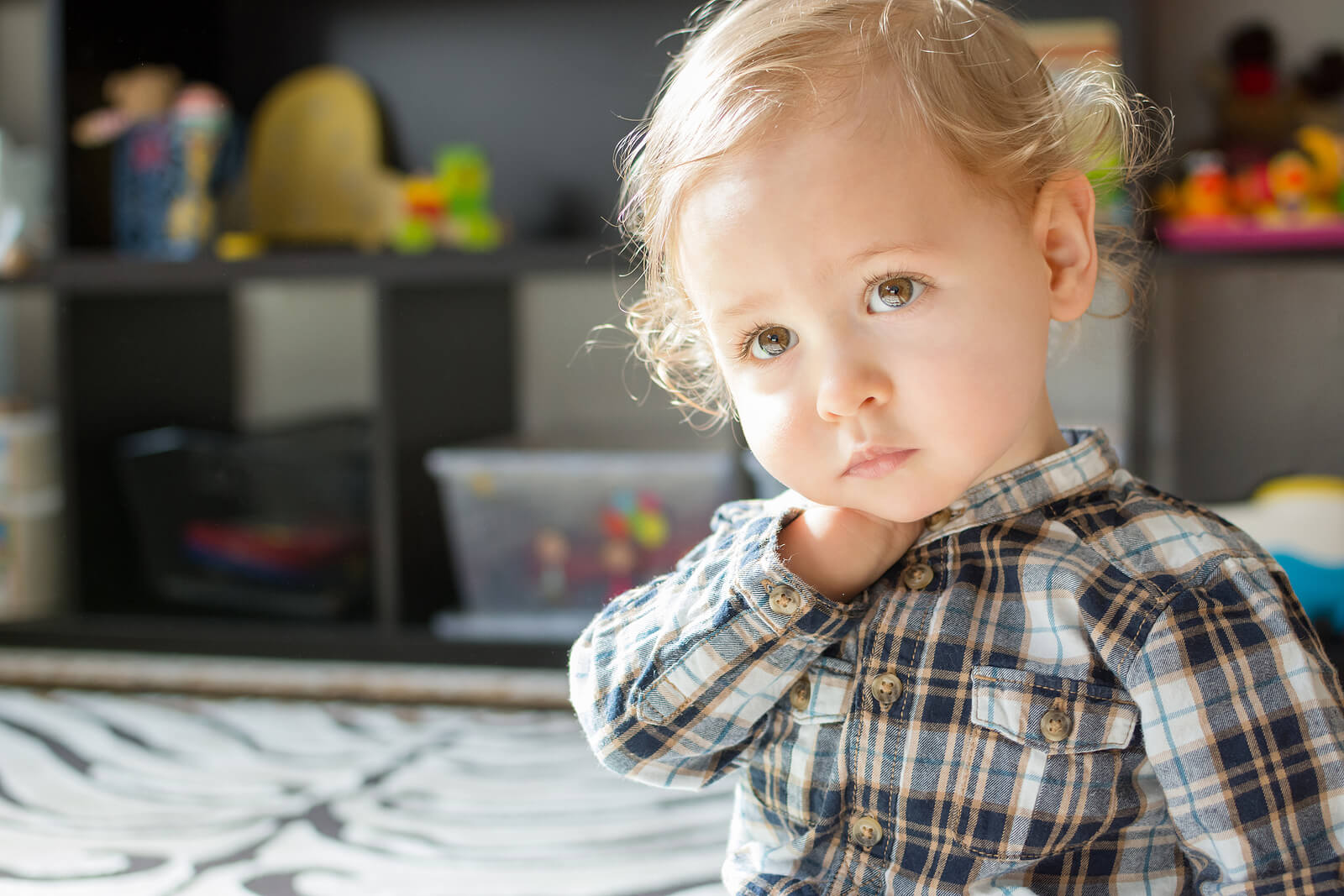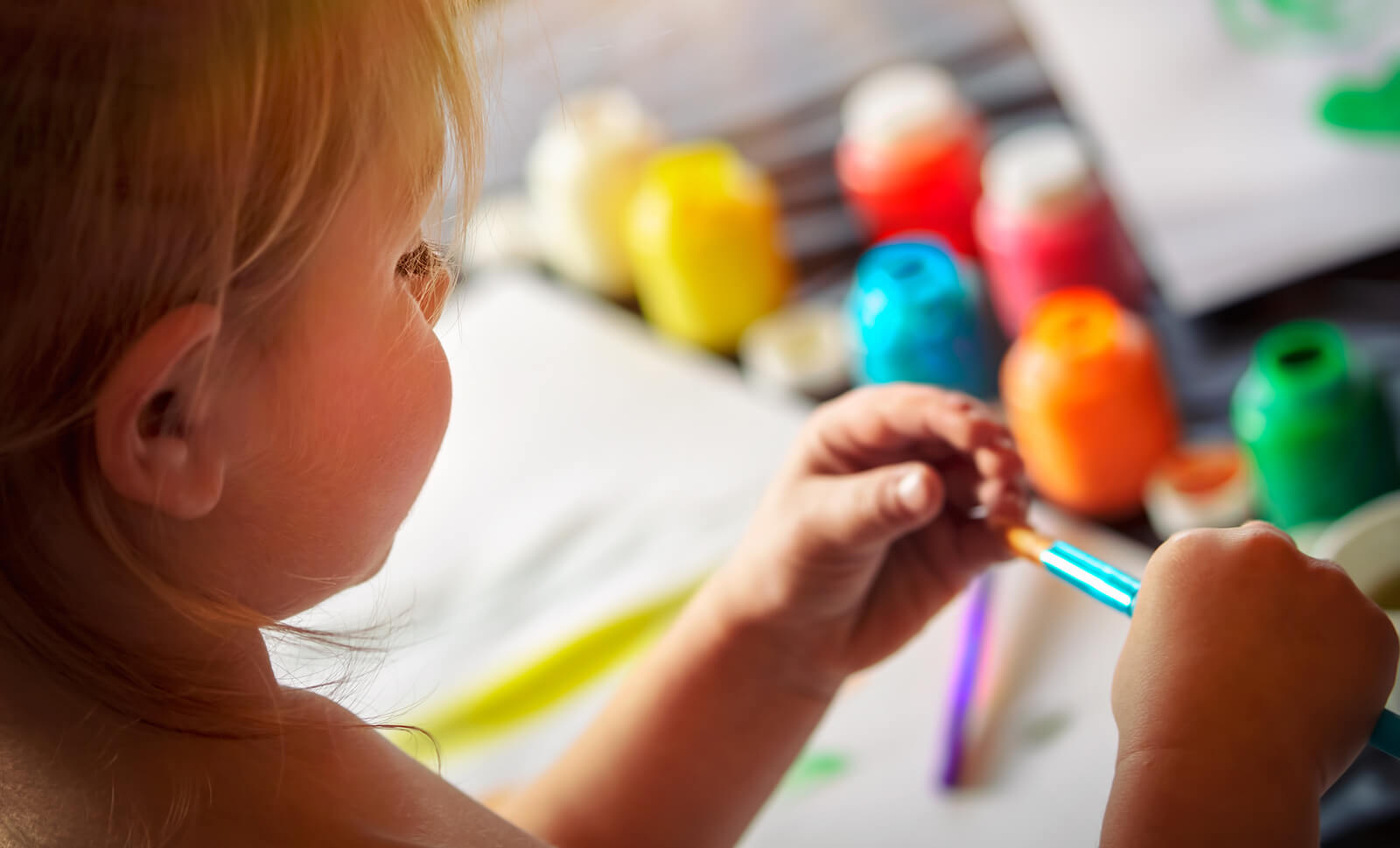The Development of Thinking in Children and How to Stimulate It


Written and verified by the psychologist Mara Amor López
The development of thinking in children is fundamental to being able to reason and understand everything that surrounds them, from their environment to their emotions and sensations. How do they achieve this? Through their senses, they capture stimuli and transform them into information to analyze, memorize, and share it. Thanks to this, they can face and solve the problems they encounter on a daily basis.
Thinking begins at birth, and their experiences with the world will increase their capacity to think. Not only does the child’s natural ability to develop thinking play an important role here, but education plays a key role in guiding, stimulating, and enhancing it.
Stages of the development of thinking in children up to the age of 5
Thinking begins to develop from birth and, as the child grows, the child’s skills and aptitudes increase. Here, we’ll focus on the stages of cognitive development up to age 5.

From birth to 6 months
At this age, infants have no notion of time or frequency, so everything that’s perceived is perceived as something unique. Despite this, children at this stage have very strong cognitive needs and quickly learn to understand and process information.
Around 4-5 months, visual-motor thinking begins to develop, which is related to the grasping of objects to which the baby’s actions will be related. Slowly, they begin to recognize familiar objects and faces, which begins the development of memory.
Although during this period, the child doesn’t yet have the capacity for verbal communication, they do have skills for non-verbal language, facial expressions, crying, gestures, etc.
From 6 to 9 months
At this stage, the development of logical thinking begins, that is, the child begins to understand that a certain action will lead to a defined result.
They also begin to relate words to the objects around them. This is a very important step in the development of language.
From 9 to 12 months
Here, abstract thinking begins, as the child begins to categorize, albeit in a very simple way, assigning qualities and properties to the objects they encounter. For example, they call every means of transport they see a car, or all animals with tails a cat or a dog.
At 12 months
At around one year of age, the child can already consciously say around 5 to 10 words. Logical development continues to progress and the child begins to understand cause-effect relationships in both simple and more complex actions.
By 18 months
The child is able to categorize objects by size, color, or shape. At around one and a half years, the development of imagination begins. The child shows interest in role-playing games, such as playing shopping at the store or feeding their dolls.
With respect to language, there’s also an important advance, as the child begins not only to refer to objects and actions but is already able to describe situations. Little by little, they try to form more and more complete sentences.
At 2 years of age
At this age, they already begin to have a more reasonable image of the world and will start to ask themselves the reason for everything. Parents should encourage their child’s interest by explaining and answering all the questions they ask in a clear and simple way.
To increase the development of their language, it’s important to encourage the child to express their opinion about the things around them. In addition to promoting their language, it will help them to develop their logical thinking to a more advanced level.
From 3 to 5 years old
The child can already talk about their memories without any problems. During this stage, the child’s visuospatial capacity and imagination are fully developed, especially through the use of techniques such as sculpture, painting, etc. This will help to increase their creativity.
The development of consciousness is also increasing and they’re already aware of their qualities, characteristics, and their own personality.

Tips to stimulate the development of thinking in children
Here are some tips that will help stimulate children’s thinking development.
- Try not to always repeat the same activities; from time to time, break the routine with other things to do. Take them in your arms to other places so they can get to know the world around them. The more experiences they have, the better their development will be.
- Try to get your child to work with both hands. This way, they’ll exercise the fine motor skills of both hands and, therefore, the development of both cerebral hemispheres.
- Make sure they have a wide circle of people to interact with them. Uncles, grandparents, friends, or other people around them. This way, they’ll have a greater number of skills and experiences.
- Don’t put limits on the child’s imagination by telling them what’s right or wrong. If they want to paint the apples triangular and green, or a car with square wheels, let them. There’s no problem with that. Their imagination is developing.
- Don’t always be the one to decide for the little one; give them the opportunity to choose what they want to do or see. A child who’s interested in something concrete is telling us that they’re capable of “learning”.
- Read books, take them to museums and zoos, and even use educational board games that encourage their intelligence at this stage.
Regarding the development of thinking in children…
You’ve already seen how the development of thinking in children is, the different stages they go through from birth to 5 years old, and how you can encourage its stimulation.
It’s very important to let children be children, let them be free to imagine without imposing what’s right or wrong, and always contribute by providing experiences that favor their cognitive development.
The development of thinking in children is fundamental to being able to reason and understand everything that surrounds them, from their environment to their emotions and sensations. How do they achieve this? Through their senses, they capture stimuli and transform them into information to analyze, memorize, and share it. Thanks to this, they can face and solve the problems they encounter on a daily basis.
Thinking begins at birth, and their experiences with the world will increase their capacity to think. Not only does the child’s natural ability to develop thinking play an important role here, but education plays a key role in guiding, stimulating, and enhancing it.
Stages of the development of thinking in children up to the age of 5
Thinking begins to develop from birth and, as the child grows, the child’s skills and aptitudes increase. Here, we’ll focus on the stages of cognitive development up to age 5.

From birth to 6 months
At this age, infants have no notion of time or frequency, so everything that’s perceived is perceived as something unique. Despite this, children at this stage have very strong cognitive needs and quickly learn to understand and process information.
Around 4-5 months, visual-motor thinking begins to develop, which is related to the grasping of objects to which the baby’s actions will be related. Slowly, they begin to recognize familiar objects and faces, which begins the development of memory.
Although during this period, the child doesn’t yet have the capacity for verbal communication, they do have skills for non-verbal language, facial expressions, crying, gestures, etc.
From 6 to 9 months
At this stage, the development of logical thinking begins, that is, the child begins to understand that a certain action will lead to a defined result.
They also begin to relate words to the objects around them. This is a very important step in the development of language.
From 9 to 12 months
Here, abstract thinking begins, as the child begins to categorize, albeit in a very simple way, assigning qualities and properties to the objects they encounter. For example, they call every means of transport they see a car, or all animals with tails a cat or a dog.
At 12 months
At around one year of age, the child can already consciously say around 5 to 10 words. Logical development continues to progress and the child begins to understand cause-effect relationships in both simple and more complex actions.
By 18 months
The child is able to categorize objects by size, color, or shape. At around one and a half years, the development of imagination begins. The child shows interest in role-playing games, such as playing shopping at the store or feeding their dolls.
With respect to language, there’s also an important advance, as the child begins not only to refer to objects and actions but is already able to describe situations. Little by little, they try to form more and more complete sentences.
At 2 years of age
At this age, they already begin to have a more reasonable image of the world and will start to ask themselves the reason for everything. Parents should encourage their child’s interest by explaining and answering all the questions they ask in a clear and simple way.
To increase the development of their language, it’s important to encourage the child to express their opinion about the things around them. In addition to promoting their language, it will help them to develop their logical thinking to a more advanced level.
From 3 to 5 years old
The child can already talk about their memories without any problems. During this stage, the child’s visuospatial capacity and imagination are fully developed, especially through the use of techniques such as sculpture, painting, etc. This will help to increase their creativity.
The development of consciousness is also increasing and they’re already aware of their qualities, characteristics, and their own personality.

Tips to stimulate the development of thinking in children
Here are some tips that will help stimulate children’s thinking development.
- Try not to always repeat the same activities; from time to time, break the routine with other things to do. Take them in your arms to other places so they can get to know the world around them. The more experiences they have, the better their development will be.
- Try to get your child to work with both hands. This way, they’ll exercise the fine motor skills of both hands and, therefore, the development of both cerebral hemispheres.
- Make sure they have a wide circle of people to interact with them. Uncles, grandparents, friends, or other people around them. This way, they’ll have a greater number of skills and experiences.
- Don’t put limits on the child’s imagination by telling them what’s right or wrong. If they want to paint the apples triangular and green, or a car with square wheels, let them. There’s no problem with that. Their imagination is developing.
- Don’t always be the one to decide for the little one; give them the opportunity to choose what they want to do or see. A child who’s interested in something concrete is telling us that they’re capable of “learning”.
- Read books, take them to museums and zoos, and even use educational board games that encourage their intelligence at this stage.
Regarding the development of thinking in children…
You’ve already seen how the development of thinking in children is, the different stages they go through from birth to 5 years old, and how you can encourage its stimulation.
It’s very important to let children be children, let them be free to imagine without imposing what’s right or wrong, and always contribute by providing experiences that favor their cognitive development.
All cited sources were thoroughly reviewed by our team to ensure their quality, reliability, currency, and validity. The bibliography of this article was considered reliable and of academic or scientific accuracy.
- Arratia, J. I. I. (2004). El dibujo y la expresión oral como evidencias en el desarrollo del pensamiento de los niños preescolares. Revista Internacional de Ciencias Sociales y Humanidades, SOCIOTAM, 14(2), 153-172. https://www.redalyc.org/pdf/654/65414206.pdf
- Cañizales, J. Y. (2004). Estrategias didácticas para activar el desarrollo de los procesos de pensamiento en el preescolar. Investigación y postgrado, 19(2), 179-200.
- Ternera, L. A. C. (2009). Características del desarrollo cognitivo y del lenguaje en niños de edad preescolar. Psicogente, 12(22).
- Vive. (2020). Desarrollo del pensamiento en niños: importancia y metodologías . UNIR. https://www.unir.net/educacion/revista/desarrollo-del-pensamiento-en-ninos-importancia-y-metodologias/
This text is provided for informational purposes only and does not replace consultation with a professional. If in doubt, consult your specialist.








